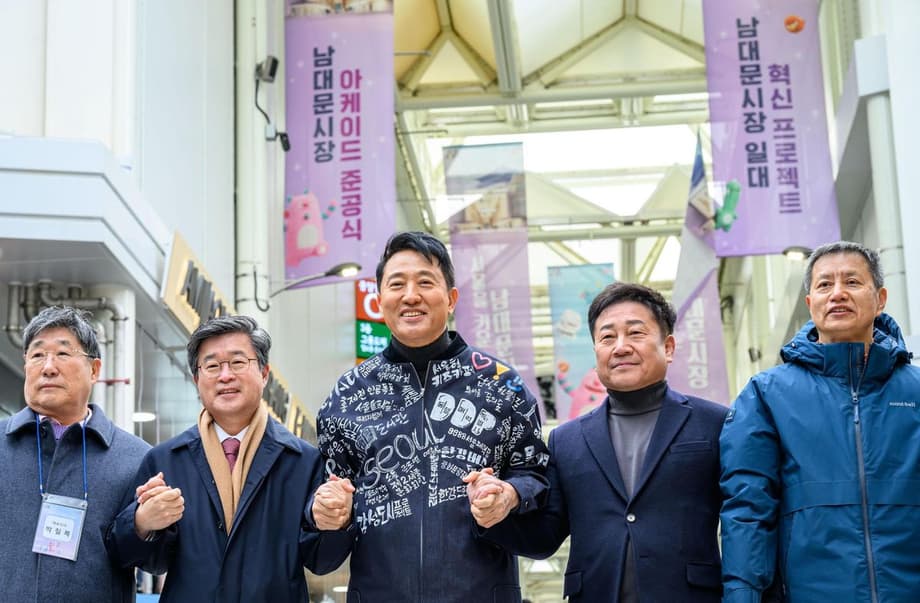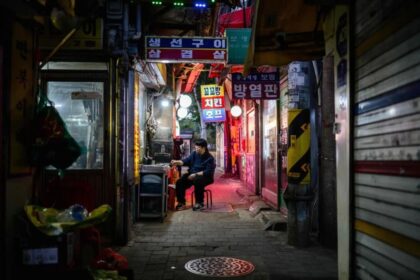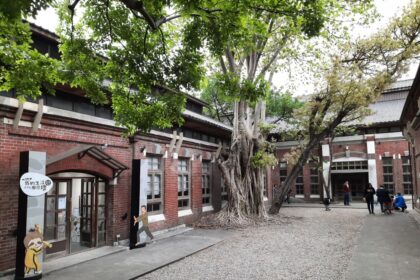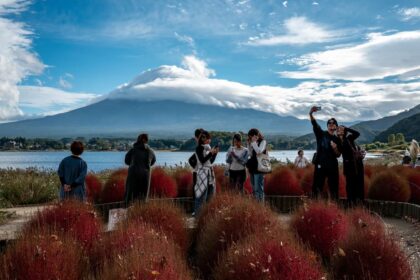A new chapter for Seoul’s oldest marketplace
Seoul has set a bold course for Namdaemun Market, the city’s oldest and largest traditional market, by opening a new covered Design Arcade and announcing a broader renewal plan that elevates safety, accessibility and cultural appeal. The initiative aims to knit six centuries of history with the energy of modern city life. It introduces a 135 meter canopy along the market’s main spine, new pedestrian plazas, a viewing promenade near Sungnyemun Gate and barrier free links to transit, creating a more comfortable and welcoming experience for merchants, residents and visitors.
- A new chapter for Seoul’s oldest marketplace
- What is changing on the ground
- Why the market needed an upgrade
- Protecting heritage while adding life
- What urban research tells us about markets that thrive
- What it means for merchants, neighbors and visitors
- Timeline and stewardship
- How to experience the renewed market
- Risks to watch and how the city can address them
- What to Know
Namdaemun Market began in 1414 during the Joseon period and grew with Seoul as a center of trade and daily life. It remains a commercial powerhouse with thousands of stores and stalls, and an estimated network of many thousands of wholesalers and retailers. Changing shopping habits and a shortage of public space have pressured its competitiveness in recent years. City planners now see a path that keeps the hustle and flavor of a classic market while adding the kinds of amenities that world famous markets use to attract both locals and travelers, including better circulation, places to rest and memorable food and cultural experiences.
What is changing on the ground
The plan is not a single building. It is a connected set of upgrades to streets, plazas, walkways and market structures that improves comfort and safety without stripping away the market’s character. The rollout starts with the new Design Arcade and expands to a refreshed gateway plaza, a scenic observatory path near the historic gate, and garden rich walking links that draw people toward Namsan.
The new Design Arcade
The headline feature is a 135 meter covered corridor that follows the curve of the market’s main street. Its form takes cues from the gently extended eaves of hanok architecture, softening the edge between sky and stall. A high performance membrane roof allows daylight to filter in, keeps rain off shoppers and goods, and promotes air movement so that heat and smoke do not collect. Wider clearances improve visibility between shops and create better routes for emergency access.
For merchants who have long contended with summer humidity, winter winds and seasonal downpours, a canopy that balances light, shade and ventilation can be a game changer for comfort and trade. For visitors, the arcade sharpens the sense of place. It reads as a continuous spine that organizes wayfinding without flattening the market’s maze of alleys. The design language nods to tradition but uses modern building techniques that meet safety codes and maintenance needs.
Gateway plaza and the observatory path
The market’s entry points set first impressions. An old waste transfer station at a key entrance is being replaced with a public plaza that offers seating, convenience facilities and a clear rendezvous point. A welcoming front door also helps groups assemble and disperse without blocking stall fronts, easing the strain on the narrowest aisles during busy hours.
Next to the plaza, the Sungnyemun Observatory Path will widen the sidewalk and add a two story promenade with views of Sungnyemun, also known as Namdaemun Gate. The gate is National Treasure No. 1, and the promenade gives people a safe, elevated way to appreciate the structure and its stone base while moving between the gate and the market. The goal is to create a slow walking experience that connects shopping streets with one of Korea’s most important heritage landmarks.
Accessibility and links to transit
New elevators and elevated corridors will link Hoehyeon Station to Baekbeom Square, giving step free access to people using wheelchairs, senior citizens, parents with strollers and anyone hauling goods. Gentle grades and clear signage are planned to make those movements intuitive. Better vertical connections also spread crowds across multiple routes, which can relieve pressure on the busiest corners.
Beyond the market core, the Namsan Walking Trail is being redesigned with gardens, art installations and small rest spots. These touches are meant to lengthen visits, invite a quiet pause between purchases and pull more foot traffic gently toward the slopes of Namsan, one of central Seoul’s signature green spaces.
Why the market needed an upgrade
Traditional markets across Korea felt pressure beginning in the 1990s as big box stores, department stores and e commerce reshaped retail. Namdaemun Market has continued to draw crowds, yet the lack of modern amenities, route clarity and weather protection made it harder to compete for people’s time. Stalls and shops often face the street with little buffer. That gives the market its famed bustle but also creates pinch points and exposure to rain and heat. Public seating, shade, restrooms and accessible routes have not kept pace with visitor volumes.
The market’s scale remains impressive. As of 2016 it contained about 5,200 stores and roughly 9,090 workers across 64,612 square meters of trading space. City officials and merchant groups say the market’s wider community includes many thousands of wholesalers and retailers who rely on Namdaemun as a distribution and retail hub. Textiles, clothing, kitchen goods, accessories, ginseng and specialty foods all move through these lanes. The upgrades aim to protect that mix by giving merchants reliable shelter, clearer loading and delivery windows and a street setting that encourages longer stays.
Safety and resilience are also part of the case for change. The market has survived fires and war. Better lighting, ventilation, clear egress routes and upgraded materials lower risk. Well marked paths and distinct nodes, such as the gateway plaza, help emergency crews move in and out quickly if needed.
Protecting heritage while adding life
Namdaemun Market sits beside Sungnyemun Gate, an icon of Seoul’s walled city. Any intervention near a site with that standing needs to respect sightlines, scale and materials. The new arcade references hanok eaves to keep the visual language familiar at street level. The promenade’s height gives elevated views without overwhelming the gate’s profile, and the design keeps heavy structural elements away from key perspectives of the stone arch and roofline.
The city’s plan frames the market as a cultural destination rather than a shopping venue alone. That means upgrades that support food tasting, hands on experiences and small performances that fit the context. This approach mirrors successful examples abroad. Markets in London, Barcelona and Kyoto draw repeat visits not just for goods, but for the rituals of eating, watching craftspeople at work and learning how local products are made. Namdaemun already has alleys for galchi stew, knife cut noodles and sweet hotteok. Better public space can make those food streets easier to find and more comfortable to enjoy.
Merchant participation is essential. Namdaemun is collectively shaped by shop owners and stall operators who often run family businesses. Maintenance of the new canopy, daily cleaning, attention to fire safety and consistent opening hours will come down to agreements among merchants working with district and city teams. The early opening of the arcade at a ceremony attended by Mayor Oh Se hoon signals that partnership.
What urban research tells us about markets that thrive
Urban design studies of traditional markets in Korea point to a simple pattern. Markets stay lively when they are easy to reach from many directions, yet still have protected pockets that hold their traditional form. Long streets with strong integration in the city’s street network pull people through. Then, specialized alleys act as buffer zones where traditional scales and crafts can endure without being crowded out by faster traffic.
Namdaemun’s upgrades match that pattern. The observatory path and gateway plaza strengthen the main routes and make the market more visible from outside. The Design Arcade provides a legible spine that people can follow, with smaller alleys branching off to food zones and textile blocks that keep their texture. Step free links to Hoehyeon Station and the Namsan trail extend the catchment area so that more people can reach the market on foot and by transit.
What it means for merchants, neighbors and visitors
For merchants, weather protection can stabilize daily sales. Goods are less likely to be damaged by sudden rain. Visitors are more comfortable lingering, and dwell time is a key driver of spending in street markets. Better lighting and clear lines of sight also reduce petty crime risk and make it easier for shopkeepers to watch their surroundings.
For nearby residents, clearer circulation can reduce sidewalk blockages. Crowds should distribute more evenly when there are multiple paths and a larger plaza to absorb groups. The garden touches along the Namsan route and improved wayfinding can draw tourists away from a few overcrowded lanes and into adjacent streets where smaller businesses can benefit.
For visitors, the experience becomes both calmer and richer. There is a place to meet, a clear main axis to follow, and scenic moments near the historic gate. Better accessibility opens the market to people who previously found the stairs and slopes too challenging. The upgrades invite people to come for lunch, stroll, shop and stay for the evening glow on Sungnyemun’s tiles.
Timeline and stewardship
The initial phase is already visible. The 135 meter Design Arcade is open along the market’s main street. The next steps focus on the gateway area where the plaza will replace the former waste facility and where the observatory path will create a generous walking edge with views to Sungnyemun. The city intends to stage later works to limit disruption to trading days.
Stewardship will decide the project’s lasting success. The membrane roof needs scheduled cleaning and quick repairs. Fire routes and emergency equipment require regular checks. Close coordination among the Seoul Metropolitan Government, Jung District offices, heritage authorities and merchant associations will be needed to keep public spaces tidy and rules consistent.
How to experience the renewed market
Namdaemun Market sits in central Seoul next to Sungnyemun Gate, with Hoehyeon Station on Line 4 as the most convenient subway stop. From the station, follow signs for the market and look for the new arcade that runs along the main street. The promenade near the gate offers a short walk with wide views of the restored stone walls and the gate’s sweeping roof. Seoullo 7017, the elevated garden walk, is also nearby, making it easy to fold the market into a larger walking loop through the city center.
Kitchen goods and textiles are easier to browse in the morning. Food alleys come alive late morning through the afternoon. Popular dishes include galchi stew, knife cut noodles and hotteok. Bring both cash and cards, stay aware of handcarts and delivery bikes, and use the new plaza as a meeting point if you come with a group. Wayfinding will direct you toward the observatory path and the Namsan trail if you want to continue exploring.
Risks to watch and how the city can address them
Major upgrades can attract more visitors and raise commercial pressure. If rents rise too fast, long running shops may struggle. The city and district can help by promoting programs that support legacy businesses, setting fair rules for stall allocation and encouraging a balanced mix of goods so that the market does not tilt too heavily toward souvenirs.
Overcrowding is another risk. Clear delivery times for vendors, extra waste collection during peak periods and real time crowd guidance can reduce conflicts in narrow lanes. Multilingual signage helps newcomers, but the visual language should keep Korean identity front and center so the market does not feel generic.
Safety needs ongoing attention. The canopy and improved ventilation help, yet routes must remain clear of displays. Drainage under the membrane roof should be checked regularly in heavy rain. Fire extinguishers and alarms should be visible and functional. Training sessions with merchants can keep everyone ready for emergencies while preserving the spontaneous feel that people love about Namdaemun.
What to Know
- Seoul opened a 135 meter Design Arcade at Namdaemun Market and outlined a wider renewal plan
- The canopy references hanok eaves and uses a membrane roof for light, ventilation and weather protection
- A new gateway plaza will replace a former waste facility to create a welcoming entrance
- The Sungnyemun Observatory Path will widen sidewalks and add a two story promenade with views of the National Treasure
- Elevators and elevated corridors will connect Hoehyeon Station to Baekbeom Square for step free access
- The Namsan Walking Trail will add gardens and art installations to extend visits beyond shopping
- The plan aims to protect market heritage while improving safety, comfort and wayfinding
- Merchant participation and coordinated maintenance are central to long term success












